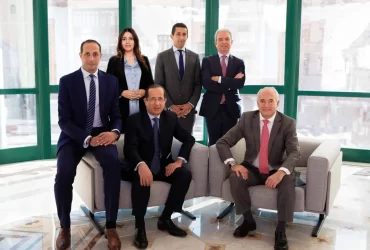During the late 2000s, the proliferation of the internet facilitated the widespread sharing of physical assets, giving rise to the “sharing economy” as coined by Harvard Law School Professor Lawrence Lessig in 2008. This phenomenon spawned companies like Uber and Airbnb, promising to revolutionize resource utilization, spanning from cars and houses to power tools and surfboards. By 2016, these startups boasted valuations of $80 billion and $30 billion, surpassing global hotel chain Hilton and traditional automakers Volkswagen and GM.
As these platforms gained household recognition, venture capital (VC) funds globally eagerly sought involvement, driven by the belief in the immense disruptive potential and the fear of missing out on the next groundbreaking “Uber of X.” A BCG analysis revealed a surge in venture-financed sharing startups from 40 in 2007 to 420 in 2016, with funding skyrocketing from $43 million to about $23.4 billion over the same period.
The rush of VC firms into sharing economy startups epitomizes the herd mentality, one of various psychological biases influencing investment decisions. In this instance, many VC funds followed the trend into a fashionable sector exhibiting early success. However, amid the fervor, many overlooked essential fundamentals. Not every sharing economy startup thrived, facing regulatory, competitive, or operational challenges. WeWork, once valued at $47 billion, filed for bankruptcy, and Bird, a scooter company valued at $2.5 billion, delisted from the NYSE after a stock collapse.
Post-COVID-19, the enthusiasm for sharing economy startups waned, revealing market saturation and fierce competition. Numerous startups failed or were acquired at reduced valuations, impacting fund returns. For example, Turkish delivery company Getir acquired rival Gorillas for $1.2 billion in 2022, significantly lower than its previous funding round valuation.

Managing Director at Portfolio Advisors, which has invested over $7.6 billion across 650+ VC funds in 25 years, emphasizes the need for venture investors to critically assess trends rather than blindly following the herd. While it’s natural for funds to be attracted to promising trends, succumbing to the herd mentality without thoughtful evaluation can lead to overexposure, heightened competition, and potential challenges for fund performance.
The influence of ego and overconfidence on the magnitudes of investment checks.

In the realm of venture capital, determining the size of an investment check, which represents the amount invested in a deal, isn’t solely a financial calculation. At times, it serves as a reflection of how a fund aims to portray itself externally. The desire to secure a prominent role in a coveted startup and emerge victorious in a competitive deal can result in inflated check sizes. When an investor’s ego plays a role in shaping the investment size, it may lead to an excessive emphasis on control, an increased risk of overvaluing the company, reduced diversification in the investment portfolio, and diminished capital for future investment opportunities.
The impact of the fear of relinquishing control and a tendency toward risk aversion on the ownership percentage.
Furthermore, the determination of the extent of ownership in a startup is not solely driven by financial considerations but mirrors the fund’s risk tolerance and strategic objectives. Opting for substantial ownership percentages, for instance, may indicate a risk-averse approach, driven by the desire for heightened control and influence over the portfolio company.
Securing a larger ownership stake in a startup not only grants a VC fund more control but also aligns its interests with those of the founders, fostering collaborative efforts toward shared long-term goals. This approach also bolsters the fund’s reputation, showcasing its ability to secure substantial stakes in leading companies, as highlighted by von der Schulenberg.
However, the pursuit of high ownership levels, in theory, may constrain the fund’s portfolio diversification and amplify exposure to the individual performance of specific companies. While VC General Partners seek the advantages of the Power Law, they must balance this with the imperative of achieving a minimal level of portfolio diversification. This strategy could potentially hinder the fund’s adaptability to market shifts or its ability to capitalize on emerging trends. Lastly, a significant stake might complicate liquidity events, introducing challenges in finding suitable buyers or attaining satisfactory valuations.
Loss aversion can lead companies to retain underperforming assets
Loss aversion, a cognitive bias where humans feel losses more profoundly than equivalent gains, poses a challenge for VC firms, particularly in their reluctance to part ways with underperforming investments. The intricacy arises from the illiquidity of VC investments, making divestment from portfolio companies less straightforward than in public equity markets. Despite the impracticality of outright sales, the hesitancy to acknowledge losses may result in prolonged support for underperforming ventures, potentially tying up valuable resources that could be redirected to more promising opportunities.
The influence of the loss aversion bias manifests in various aspects of VC operations.
Firstly, in terms of supporting underperforming companies, operating partners may be swayed by loss aversion, causing delays or resistance in making tough decisions to avoid admitting failures. This reluctance may impede necessary changes for the long-term health of the portfolio company.
Secondly, the bias can impact the allocation of additional funds for companies requiring bridge rounds. Investors, driven by fear of losses, might hesitate to invest more in struggling companies, limiting their support during challenging periods. Conversely, there may be a temptation to engage in bridge rounds to postpone inevitable write-downs or write-offs.
As von der Schulenberg elucidates, “If you were the one who championed the deal, pushed it through, and thinks it’s going to be a success, then you’re probably going to be inclined to reserve more capital for follow-ons than might be necessary.” While these reserves may often go unused depending on the market environment, there is a tendency for partners to over-reserve funds for their own deals, he adds.
Effectively ways of mitigating these potential biases among fund managers requires a proactive approach from investors.
In the realm of VC fund modeling, it is crucial to identify and mitigate the impact of detrimental behavioral biases while leveraging beneficial ones to make well-informed decisions. General Partners should strive for a balanced strategy that incorporates optimism and flexibility, yet grounds itself in a realistic evaluation of market conditions. This equilibrium is vital for enhancing the fund’s performance over time.
Limited partners, in turn, should prioritize the human aspect during due diligence on a specific VC fund. Cultivating enduring relationships with general partners enables limited partners to gain a deeper understanding of and manage mental biases effectively. Here are some approaches to identifying potential biases:
Scrutinize Portfolio Construction: Examine how a VC fund constructs its portfolio. A red flag may emerge if, for instance, they allocate an unusually high percentage, such as 30%, to a single deal. Such a move could indicate that ego has overridden sound investment discipline, as noted by von der Schulenberg.
Watch for Trend Followers: Investigate the sectors a fund has consistently invested in over time to assess its adaptability to prevailing trends. While some VC relationships may diversify across different sub-sectors based on trends, a fund that frequently changes its investment focus might be overly influenced by trends, warns von der Schulenberg
Source:
Raphaël Grieco
Research Associate at the IMD Venture Asset Management Initiative


















